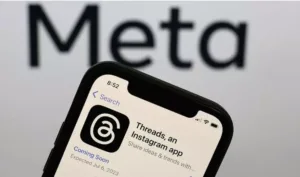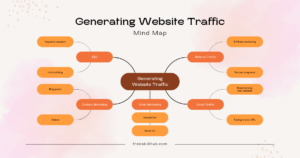This trading course will provide you with a solid foundation from which to learn the ropes. Our programmers is all-inclusive, covering everything from the fundamentals of trading to cutting-edge methods for increasing returns. Learn all you need to know to make it in the competitive world of trading with the help of our knowledgeable teachers and engaging, hands-on learning modules.
INTRODUCTION TO TRADING:
This Trading course will tell you everything about the foreign exchange market. We’ll talk about how the market works, currency pairs, and how they are bought and sold.

We will also discuss the things that move currency pairs and how to deal with them when you trade forex. This course will give you a base for understanding foreign currency trading. So relax, put your feet up, and let’s jump into the exciting world of foreign exchange (Forex).
Intro of Forex Exchange:
In the next few minutes, we’ll discuss the foreign exchange market basics, like how it works. How it is traded, and what moves currency pairs. In this latest course, we’ll look at a step back to explain how this market works, what traders are trading, and what factors affect it. Changes in currency pairs.
First, the foreign exchange market is the biggest in the world. Trillions of dollars are traded there every day. Every day, all the time. Both small and large traders like this market because it’s easy to use. You can get your trades filled, and business costs are much lower than in other markets. In markets for currencies, Since no currency moves independently, traders deal with money pairs, where one currency is quoted against another. Let’s take a quick look at the course platform to figure out what’s going on.
Click the search box at the top left of the page corner and choose “Currencies.” You’ll see a list of different currencies, like the Australian dollar, Canadian dollar, and British pound.
Swiss francs, Czech coronas, and more. You could trade hundreds of currency pairs, like the Polish zloty and the U.S. dollar—Lotto, against the Mexican peso or the Japanese yen. Most beginners, though, stick to the major currency pairs.
Most of the time, a lot is going on in those markets. You can trade these major currency pairs with the course: If you exchange less than 25,000 units, there is no spread.
The most common pair of currencies is the euro-dollar, followed by the dollar-Japanese yen and other major teams. Pounds to dollars and dollars to Swiss francs. It’s all about relative value when looking at currency pairs. Is one currency worth more or less than another?
How The Currency Works:
Let’s look at how one currency works to see what I mean the pair has changed in the past few months. A currency pair shows how much one currency is worth concerning another. In the beginning of 2017, one pound could be exchanged for about one dollar and 22 cents. The value of one pound changed at the beginning of September. We can see how much it changed by looking at how the exchange rate has changed.
The pound’s value has increased, and now you can buy almost $1.32 with one pound. When trading currencies, We’re looking at how much one currency is worth concerning another. Currency pairs can be hard to understand, Even more so when buying a couple of dollars and yen. Whether someone is betting that the dollar will go up or down may need to be clarified.
The yen is rising. But it is simple to understand. When you buy a pair of currencies, like the pound and the U.S. dollar, the first currency listed is the one that is being bought or sold. So, when someone buys a pound-US dollar, they are gambling. That the U.S. dollar will go down and the pound will go up. When someone sells pounds to dollars, they are making a guess. That the pound will fall and the chart will turn down.
The market stays open 24 hours every day, starting when the Asian markets are available on Sunday night U.K. time.
For business, it lasts until Friday night when New York’s business weekends. Still, A 24-hour market doesn’t have to be scary. Using stop-loss and take-profit orders can help you manage risk, and You can set up trades to end with a slight loss or gain when a certain level is reached. Because of this, It’s optional to keep an eye on the markets all the time. When trading forex, one can use leverage, which means that One only has to add a small portion of the position’s value.
Regarding trading hours, the Asian trading session begins at 11 p.m. U.K. time on Sunday, and the market moves from east to west. Higher. The focus shifts to Europe between 7 and 8 a.m. U.K. time, and the demand keeps increasing. Then, At about 5 or 6 p.m. U.K. time, the focus shifts to the U.S., and the market changes significantly—a subtle finish. Even though the market remains open 24 hours a day, you can manage risk with orders and a small amount of money. Because of leverage, they can control a much more significant amount of money.
To make money in foreign exchange trading, you buy and sell currencies. Even though it can bring in more money, It also comes with more considerable risks, so it’s important to use stop losses to control them. There are many methods here to make good use of stop losses.
The short answer to this question of what moves foreign exchange players is that almost anything can affect currency markets. Interest rates, which are higher in one country than another, can make a currency more attractive.
But higher interest rates can also mean the economy is worsening, which could cause money to flow in the opposite direction. The number of people out of work also affects the markets. Politics can also have an effect, as we saw with the pound’s rise and fall.
Since the Brexit vote in June 2016, there has been much change. These things can affect the foreign exchange markets when they come together. It is the end of our short introduction to how foreign exchange works. We hope it was helpful. Download the course Now to learn How to trade like a pro. And wish you a good week of trading.













One Response